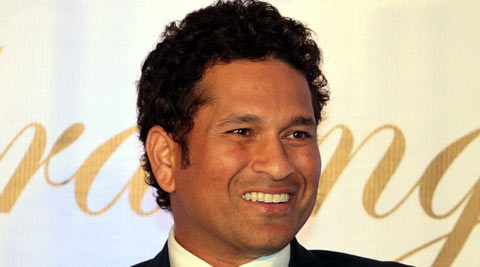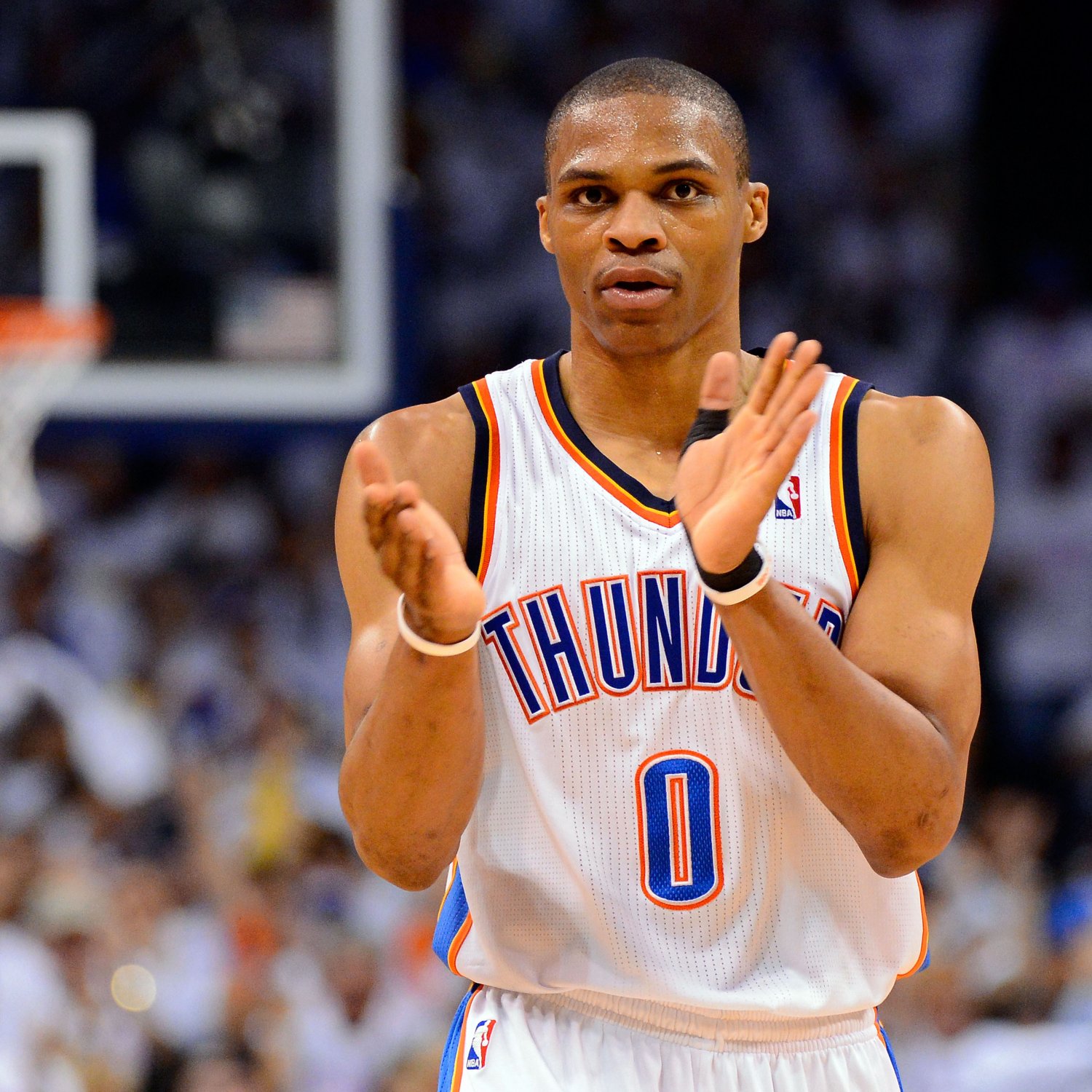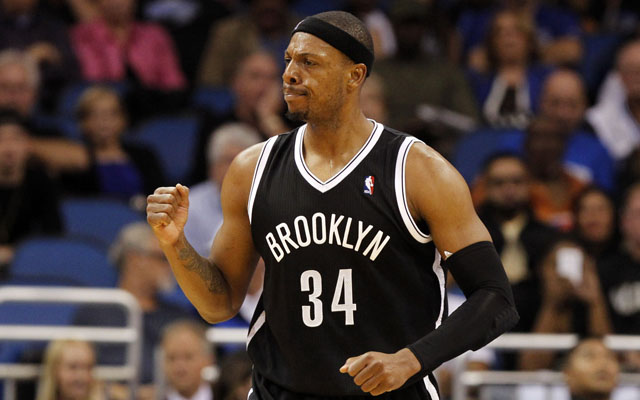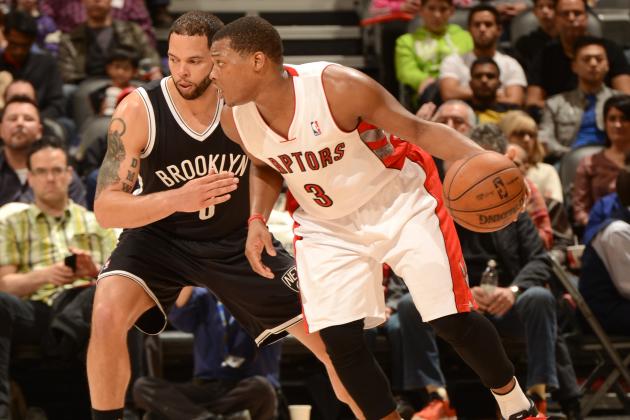This feature was first published in the 127th edition (2014 - No. 6) of SLAM China magazine. Here is original English version of the story.
Predicting the future can be a tricky business, but the hazy smog that separates reality from a close approximation of reality hasn’t stopped the tricky business of prediction to develop into the profitable business of forecasting. Cultures and beliefs around the world use varied zodiac methods to paint vague portraits of the future. If it’s not the Year of the Horse, then it’s the sign of the Aries. It is isn’t palm reader then its mystic octopuses or parrots making their guesses.
But all in all, no one
really knows anything.
And when it comes to the NBA playoffs, even prophets like Nostradamus or Hong Xiuquan couldn’t exactly predict the winners from the losers and the team that would be lifting the Larry O’Brien trophy in mid-June.
The NBA has long had its famous prophecies, too. After winning the 1987 title, Pat Riley guaranteed a repeat at the Lakers’ championship parade. A year later, his guarantee was fulfilled with the NBA’s first successful title defense in 18 seasons. In 2005, Detroit Piston Rasheed Wallace successfully guaranteed (or ‘guaransheed’) that his team would win Game 2 of the Eastern Conference Finals after falling behind to the Heat. Everyone from Dikembe Mutombo in 2001 to Kobe Bryant last year have used guarantees as part of successful motivational tactics.
And then there are the stinkers, the wild guarantees that have gone way off to the embarrassment or ridicule of the forecasters. After LeBron James left Cleveland for Miami in 2010, Cavaliers owner Dan Gilbert famously posted that his team would win a title before LeBron and the Heat. Four years since then, the Heat have won two titles and the Cavaliers have yet to make the playoffs. JR Smith guaranteed a championship for the Knicks in September, but the squad looked like a shell of itself all season. Going back to the two-time champs Heat and LeBron James: if their 2010 boasts are to be believed, Miami fans should be expecting, “Not one, not two, not three, not four, not five, not six, not seven,” titles in the Big Three era.
It’s time for us fans to rebel against tall words of such false prophets. Which is why I’m bringing you 14 fool-proof, undeniable guarantees for the 2014 playoffs. In what is priming to be another year of unpredictable action in the post-season, here are the predictions that you can be sure to bet on.
1. Marco Belinelli will become famous
If there is any model of consistency in the league, it’s those Spurs. Every year, just when everyone assumes that San Antonio are going to be done and dusted, they rise and surprise and make us all into believers again. While big names like Dwight Howard, Luol Deng, Andre Iguodala, or Josh Smith made high-profile changes of scenery over the past year, the most-underrated pick-up might have been made by the Spurs when they signed Italian Marco Belinelli from the Bulls at the beginning of the season. Even though he’s “only” pouring in 11.6 points per game, Belinelli has been a perfect fit for his new team, stretching the floor with his hot three-point shooting (39.8 percent) and giving more space and opportunities for traditional big names in San Antonio like Tim Duncan, Tony Parker, Manu Ginobili, or Kawhi Leonard to dominate more efficiently. Last year, Danny Green broke all kinds of three-point records in the NBA Finals and briefly became a household name; as the Spurs go deeper into the playoffs again, expect the same from Belinelli this year.
2. Derek Fisher will hit one or more clutch shots
At 39, we know that he’s one of the oldest players in the league, a slow-footed, defensively-minus point guard who is already third in the pecking order at his position in his own team behind Russell Westbrook and Reggie Jackson. We know that he’s only like to play between 15-20 minutes a game for OKC in the playoffs as they aspire to ride behind Kevin Durant’s brilliance to an NBA title. But make no mistake: this old horse still has the experience and timing to hit the biggest shot at the game’s biggest moments. Already through the course of this season, Fisher has time and again stepped up for the Thunder in crunch-time minutes in their most crucial games. With five titles on his resume, Fisher has no fear of the big moment, and rivals are still shook from the famous 0.4 second shot he hit over the Spurs 10 years ago. Durant, Westbrook, Ibaka, Lamb and co will clearly have a bigger impact in the Thunder’s progress in the playoffs, but Fisher is guaranteed to have his number called for a big shot (or two) over the next two months.
3. The internet will run wild with Big Baby Davis jokes
Glen “Big Baby” Davis is not a thin human being. As a matter of fact, it still surprises many that, despite his tremendous girth he is still able to become an effective rotation player in the league. Davis’ departure from the Magic to the Clippers puts him further in the eyes of the mainstream media, and now, playing for one of the contenders in the West, there will be a lot more Big Baby sightings in the playoffs. Which also means that the ruthless (and hilarious) internet is going to run wild.
4. If Clippers play the Rockets, we will witness a Dwight vs. DeAndre Free Throw contest every fourth quarter
Dwight Howard of the Rockets and DeAndre Jordan of the Clippers are both tremendously athletic Centers, and both particularly talented on the defensive end of the floor. Howard has been one of the elite big men in the league for several years and Jordan has made a quantum leap this season under Doc Rivers. The trouble is: neither one is particularly gifted from the free throw line. Howard has shot an (improved) 54.8 percent from the line this season while Jordan is in an uglier territory of 44.9 percent. If the Clippers and the Rockets are to face each other in the playoffs, fans would get a chance to witness two fast rising teams in the West with outside shots at a title run. Unfortunately, both teams also possess weaknesses at the free throw line which are fully exploited by opponents. The “Hack-A-Shaq” strategy has been passed on to his generation where defenders are happy to hack Howard or Jordan and let them try and win the game from the charity stripe. It will be an exciting series, with some of the best talents in the league like Chris Paul, James Harden, Howard, and Blake Griffin going off against each other. But be warned, because fourth quarters are going to turn into a slugfest that will eventually be decided by ugly free throw contests by the two regularly-hacked Centers.
5. We will criticize Russell Westbrook for shooting too much
This has become an annual NBA tradition, magnified in the playoffs because of the importance of every game and every possession. Kevin Durant is perhaps the NBA’s most gifted, efficient, and effortless scorer, capable of leading the league in scoring (32.2 points per game) while not even taking more than 20 shots a game. While this season has forced KD to take more of the offensive load due to Russell Westbrook’s injury, the last full playoffs that the two played together (2012) saw Westbrook jack up more shots than even his prodigiously talented teammate. A whole world of NBA fans and media-persons exist and thrive in loud support of the Anti-Westbrook campaign, criticizing the talented point guard for his supposedly selfish game and for not giving the ball up to Durant more often. If the Thunder make a deep run again, expect those voices to get even louder.
6. Despite his over-shooting, we will be amazed at how unstoppable Russell Westbrook is
Despite all the criticisms, the hate, and the doubt, Mr Westbrook will once again remind us that he adds much more to his team than he subtracts. One of the most aggressive, passionate, and athletic guards in the league, Westbrook is the one who truly takes the Thunder from being a good team to a great one. If Durant is the head of the Thunder, Westbrook is the heart. It is his passion and fearlessness that will make every other team doubly afraid of facing OKC this postseason. Last year, Westbrook’s injury added too much extra pressure on KD; pressure which ultimately caused a surprise 4-0 sweep in the Second Round at the hands of the Grizzlies. This year, if Westbrook stays healthy, we will be reminded of why despite his faults he is ultimately one of the most unstoppable players in the NBA. He will attack, he will inspire, and yes, he will make life easy for Mr Durant.
7. One (or more) Chicago players will get hurt – and it won’t stop them
I’m depressed as I write this, but recent history hasn’t been kind to the Bullish Bulls. It all began with the ill-fated 2012 playoffs, where Derrick Rose suffered the injury that kept him out for over a year. A year later, with Rose still missing, the Bulls suffered losses of Luol Deng, Kirk Hinrich, and a foot injury that slowed down Joakim Noah, and yet they still kept battling on. Coach Tom Thibodeau has two strong coaching traits: a) to overplay his top rotation players fearlessly despite any risk of injury and b) to never let his players give up, no matter the circumstance. This year, Noah will be the heart and soul of a team that will battle every night, and the likes of Carlos Boozer, Jimmy Butler, Taj Gibson, Hinrich, DJ Augustin, Mike Dunleavy Jr., Tony Snell, and more will inspire fans every night. And even when one or more them suffers an injury, they will march on instilling fear in opponents with the same unchanging tenacity.
8. At least one time in the playoffs, Stephen Curry will have 25 points in a quarter

The playoffs are better with Stephen Curry than without him. A season ago, the NBA’s most explosive three-point shooter was still coming into his own on the international stage. A 50-point outburst against the Knicks and a couple of internet-stopping shooting spurts in the playoffs changed all that, as Curry quickly became one of the most exciting young stars in the league. Don’t expect that to change: whether or not the Warriors are able to make a real playoff run, Curry will remind the world that he belongs on the pedestal with the game’s greatest players. There are few moments more electrifying than a Curry hot streak. Twice in last year’s playoffs, Curry had 22 points in the third quarter. He’s going to do it again. I predict that, at least one time in this postseason, Curry will explode for 25 or more points in a single quarter. And yes, we can also note that his backcourt mate and ‘Splash Brother’ Klay Thompson will have some hot shooting nights, too.
9. The biggest X-Factors of the playoffs will be Dwyane Wade and Serge Ibaka
Ever since the Big Three was formed in Miami, Dwyane Wade has evolved from being the number one superstar to the league’s ultimate X-Factor. The Heat and their opponents know what to expect from LeBron James, who is the model of NBA consistency, and puts up impressive numbers even on his ‘off’ nights. Chris Bosh fits in the system too, and although he rarely dominates anymore, he consistently plugs in the holes needed in every game. Wade, suffering from various ailments and injuries, is the team’s Mr Unpredictable. On certain nights, he disappears, or worse, doesn’t even play to rest an ailment. On other nights, he outperforms every other player on court, including LeBron himself. For the Heat, as ever, if Wade has more good nights than bad ones, they are sure to challenge for a title again. Out West, I predict that the difference-maker will be OKC’s Serge Ibaka. Ibaka has the potential of being of the top post defenders in the conference and spread the floor the same way Bosh does on offense on his good nights, giving the Thunder their own Big Three. Unfortunately, Ibaka hasn’t been consistent with his big nights on a regular basis. The answer is simple: the Thunder will rarely lose games in which Ibaka – in addition to Durant and Westbrook – also plays like an All Star.
10. Somebody will hit Blake Griffin
Set it in stone. An opposing forward or Center (take your pick: Andrew Bogut, Jermaine O’Neal, Zach Randolph, Robin Lopez, Serge Ibaka, etc.) will get annoyed at Blake Griffin’s dominance and thunderous dunks and bring him down. Both players will get a technical and one of them will be ejected. All of this is a guarantee.
11. Paul Pierce – and not Deron Williams or Joe Johnson – will be the Nets’ best closer
Joe Johnson (32) and Deron Williams (29), both of whom are still at or near their primes, are the two highest scorers for the Nets. But when the chips are down and the team needs a hero, there will be a familiar old face closing out games for Brooklyn in the post-season. At 36, Paul Pierce is averaging career low points averages and minutes this season, but make no mistake, the limited minutes have only been a preservation tactic for the playoffs. While Williams is the team’s primary ball-handler and Johnson has a history of end-game heroics, the most effective member of the team against major rivals like the Heat or the Pacers will be ‘The Truth’, who will use his years of experience and smarts to create offense when most needed by his team.
12. We will question Erik Spoelstra’s decision-making
Heavy is the head that wears the crown. Despite guiding his star-studded Heat squad to three consecutive Finals and back-to-back titles, Coach Spoelstra still hasn’t earned the unanimous respect as a tactician that he deserves. That is chiefly because many believe that Spoelstra’s success has more been a factor of the brilliant talents that he coaches, and less because of his own talents. This is a major misconception: even a ‘superteam’ needs a super-coach, or at least, a good coach. We’ve seen several examples of big-name teams underachieving because the man at the top never figured out how to use the weapons in his arsenal. Spoelstra’s a tactical mastermind, and has done a marvellous job year after year at making the team an efficient offensive and defensive threat every post-season. That will happen again; but whenever Miami do lose games against teams that they should be better than paper (which is pretty much every other team in the league), Spoelstra will be faulted more than his players. That is his curse: a win is credited to the players, but a loss is the fault of the coach.
13. The Eastern Conference playoffs will be far closer than we originally expected

A few months ago, the Eastern Conference Finals were pretty much decided, and the other six teams to qualify for the playoffs were being mocked for being nothing more than practice rounds for the two giants of the conference, the Heat and the Pacers. The top two teams have held a lead over any other contender in the conference by a wide margin, and were barely challenged by any other Eastern side until recent weeks. But slowly, things have changed, and the margin between the top two and the rest has narrowed dramatically. Both the Heat and particularly the Pacers have suffered from worrying slumps at crucial junctures of the season. Meanwhile, the Nets have been the hottest team in the conference and are suddenly looking like a major second round threat to either of the top two. The Bulls – with the brave Joakim Noah leading the way – are a team never to be underestimated with the ability and will to upset anyone in a playoff series. The Raptors are a wildcard, play good defense, and will be an irritant for the contenders. And the other challengers aren’t looking as bad as they were earlier in the season. A Pacers vs. Heat Eastern Conference Final is still the most likely outcome; just don’t expect it to be an easy journey for either of the two.
14. This year’s Finals will not be as good as last year’s Finals
Sorry to disappoint everyone, but that is just a fact. Last year, we witnessed one of the greatest NBA Finals in recent memory. Two ultra-talented teams with opposing tactics and styles turned the game of basketball into athletic chess. Each move had a counter move, and each counter move was countered again. For seven games, the Heat and the Spurs were nearly inseparable. Both squads displayed the best of individual greatness and team chemistry, and in the end, only minor mistakes like missed free throws or a botched rebound, became the difference between a champion and a loser. In addition to all this, Ray Allen hit what will be remembered as one of the most important shots in the history of the game to tie up Game 6 and save the tile for Miami. It is near-impossible to repeat that kind of drama at the game’s highest stage again. The only exceptions are if a) LeBron and Durant face each other off to have 40-point triple-doubles every night, b) Every game of the Final is decided in overtime, or c) Bugs Bunny helps Michael Jordan dunk from halfcourt line to beat the Monstars at the buzzer and stop them from enslaving the Looney Tunes.


























